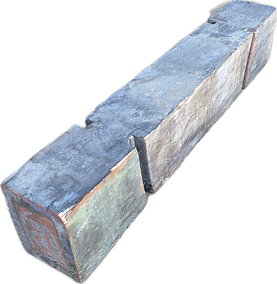
Image Source: tripadvisor.in
A stupa is a sacred structure in Buddhism, symbolizing the enlightened mind of the Buddha and serving as a place of meditation and devotion. The word “stupa” originates from the Sanskrit term meaning “heap” or “mound,” reflecting its dome-like shape. Traditionally, stupas house relics of the Buddha, his disciples, or sacred texts, making them a focal point of spiritual practice and pilgrimage.
Architecture and Symbolism
The design of a stupa is imbued with deep symbolic meaning, representing the Buddha’s path to enlightenment and the cosmos itself. A typical stupa comprises five key elements, each corresponding to the five elements of nature:
- Base (Earth): Represents stability and the foundation of spiritual practice.
- Dome (Water): Symbolizes the collective wisdom and teachings of the Buddha.
- Spire or Harmika (Fire): Represents spiritual energy and the path to enlightenment.
- Umbrella or Chattra (Air): Denotes protection and the Buddha’s guidance.
- Pinnacle (Space): Signifies the boundless and infinite nature of enlightenment.
The structure as a whole mirrors the body of the Buddha in meditative posture, emphasizing stillness, balance, and mindfulness.
Eight Stupas
The Eight Types of Stupas symbolize significant events in the life of the Buddha, representing milestones on his spiritual journey and teachings. These stupas, also known as chortens, are revered as sacred architectural forms and convey profound Buddhist principles.
1. Lotus Blossom Stupa (Ka Dhen Chörten)
- Significance: This stupa commemorates the Buddha’s birth in Lumbini.
- Description: The base of the stupa is circular, symbolizing the open lotus flower. It reflects the Buddha’s pure and miraculous birth and the potential for enlightenment inherent in all beings.
2. Enlightenment Stupa (Jang Chub Chörten)
- Significance: Marks the Buddha’s enlightenment under the Bodhi tree in Bodh Gaya.
- Description: This stupa has a square base and a rounded dome, representing the realization of ultimate wisdom and the overcoming of ignorance.
3. Turning the Wheel of Dharma Stupa (Chö Khor Chörten)
- Significance: Commemorates the Buddha’s first teaching at Sarnath, where he set the Dharma in motion.
- Description: The structure is characterized by multiple steps, symbolizing the Buddha’s teachings and the progression of understanding the path to liberation.
4. Great Miracles Stupa (Cho Trul Chörten)
- Significance: Celebrates the Buddha’s display of miraculous powers in Shravasti to inspire faith.
- Description: This stupa often features decorative elements symbolizing the miraculous nature of the Buddha’s actions and his victory over skepticism.
5. Descent from Tushita Heaven Stupa (Lhabab Chörten)
- Significance: Represents the Buddha’s descent from Tushita Heaven, where he taught his mother the Dharma.
- Description: This stupa includes a central pillar or steps, symbolizing the Buddha’s journey from the heavenly realms to the earthly plane, signifying the connection between the two.
6. Reconciliation Stupa (Yundün Chörten)
- Significance: Marks the resolution of a schism among the Buddha’s disciples.
- Description: The stupa emphasizes harmony and unity, often designed with a harmonious balance of elements reflecting reconciliation and restoration of order.
7. Complete Victory Stupa (Namgyal Chörten)
- Significance: Commemorates the Buddha prolonging his life by three months to teach more Dharma.
- Description: This stupa features a larger base and ornate design, symbolizing the Buddha’s compassion and his complete mastery over the forces of death.
8. Parinirvana Stupa (Nyangde Chörten)
- Significance: Represents the Buddha’s passing into Parinirvana in Kushinagar.
- Description: This stupa is characterized by a bell-shaped dome and a simple, serene design, symbolizing the Buddha’s ultimate liberation from the cycle of birth and death.

Product 0060 showcases the depiction of enlightenment stupa carved from ‘Bogh’.

Our Timber Source is a remarkable piece with a rich history. It was originally utilized as a Bogh element in Chagri Monastery and is believed to be around 400 years old. The age and significance of this timber element make it a valuable addition to any collection.

